Menu

THE BLACKSMITH
KENSHIRO HATONO
- Choosing a selection results in a full page refresh.




















Usually ready in 1 hour
| Length | 135 mm |
| Total Length | 265 mm |
| Steel | Shirogami (White #1) Stainless Clad |
| Handle | Maple |
| Ferrule | Walnut |
| Rockwell | 62-63 |
| Height Spine to heel | 35 mm |
| Width at Spine | 2.16 mm |
| Weight | 84 grams |
| Bevel | Double(50/50) |
The Blacksmith
Kenshiro Hatono is a young and very talented smith who has been working as an apprentice under Katsuyasu Kamo in the Takefu knife village for the past 6 years. He has recently started to deliver the first batch of knives made under his own name and we are beyond excited to have these incredible blades available in our shop. If you've been waiting to get your hands on a knife from Shiro Kamo, we highly recommend considering these as well. They have a taller blade than the offerings from Shiro Kamo which allows Hatono-san to put some killer grinds on them. Nice and then behind the edge which gently transitions to the thin spine, giving these knives an incredible cutting feel.
The Shape
The petty is the Japanese equivalent of the western style paring knife. They're usually a little longer and I could never go back after using one. The idea is all the on board work is done with your gyuto or chef knife and everything in hand is done with the petty. Not limited to capping strawberries, peeling, turning, or coring veggies, and smaller butchery tasks like chicken, small fish, or deboning a pork shoulder.
Follow these care recommendations for your Japanese knives to protect the edge and keep them sharp as long as possible:
All products are shipped within 24 hours. We offer same day shipping for products ordered by 12pm. Please allow 4-7 business days for your shipment to arrive with standard shipping. Expedited shipping options are also available at checkout.
We offer free shipping on orders within Canada over $150 CAD and free shipping on orders to the US over $200 USD.
Curbside pick-up is available at both our Hamilton and Etobicoke locations.
To make sure our customers are always satisfied, we offer full refunds on products for 14 days after receiving them. See our full return policy for details.
More questions? Check out our shipping policy, our return policy, or reach out to us directly.
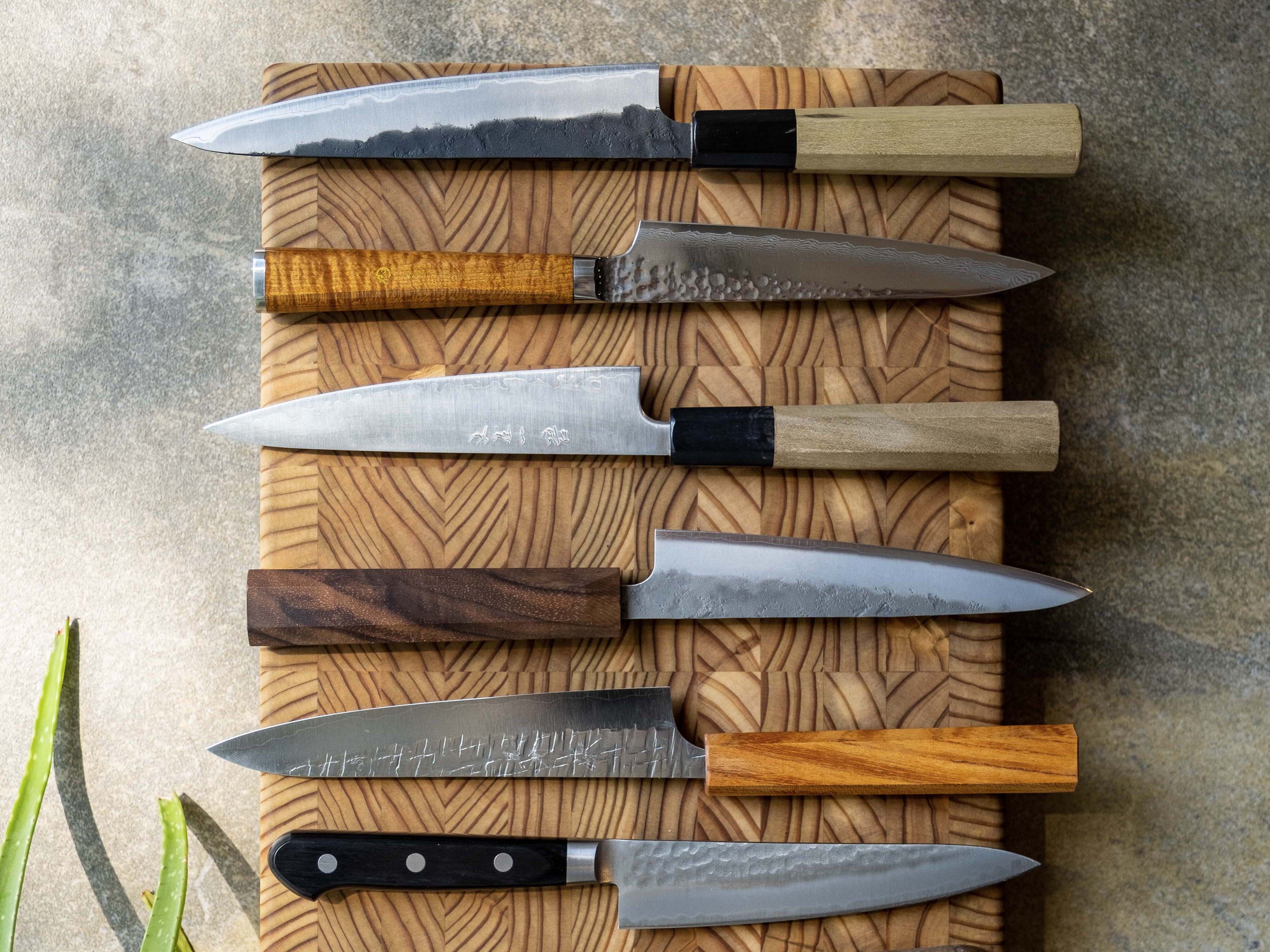

The petty knife is the Japanese equivalent of a utility knife. They typically range in size from 90 mm (3.5 inches) to 150 mm (6 inches) and have a slender, easy-to-control, short blade. They are a perfect accompaniment to a Gyuto, Santoku, or Bunka, as they facilitate smaller tasks. Shorter versions are great for in-hand use. Longer versions are great for fine chopping and managing small ingredients on a cutting board. They also handle butchery tasks with ease.
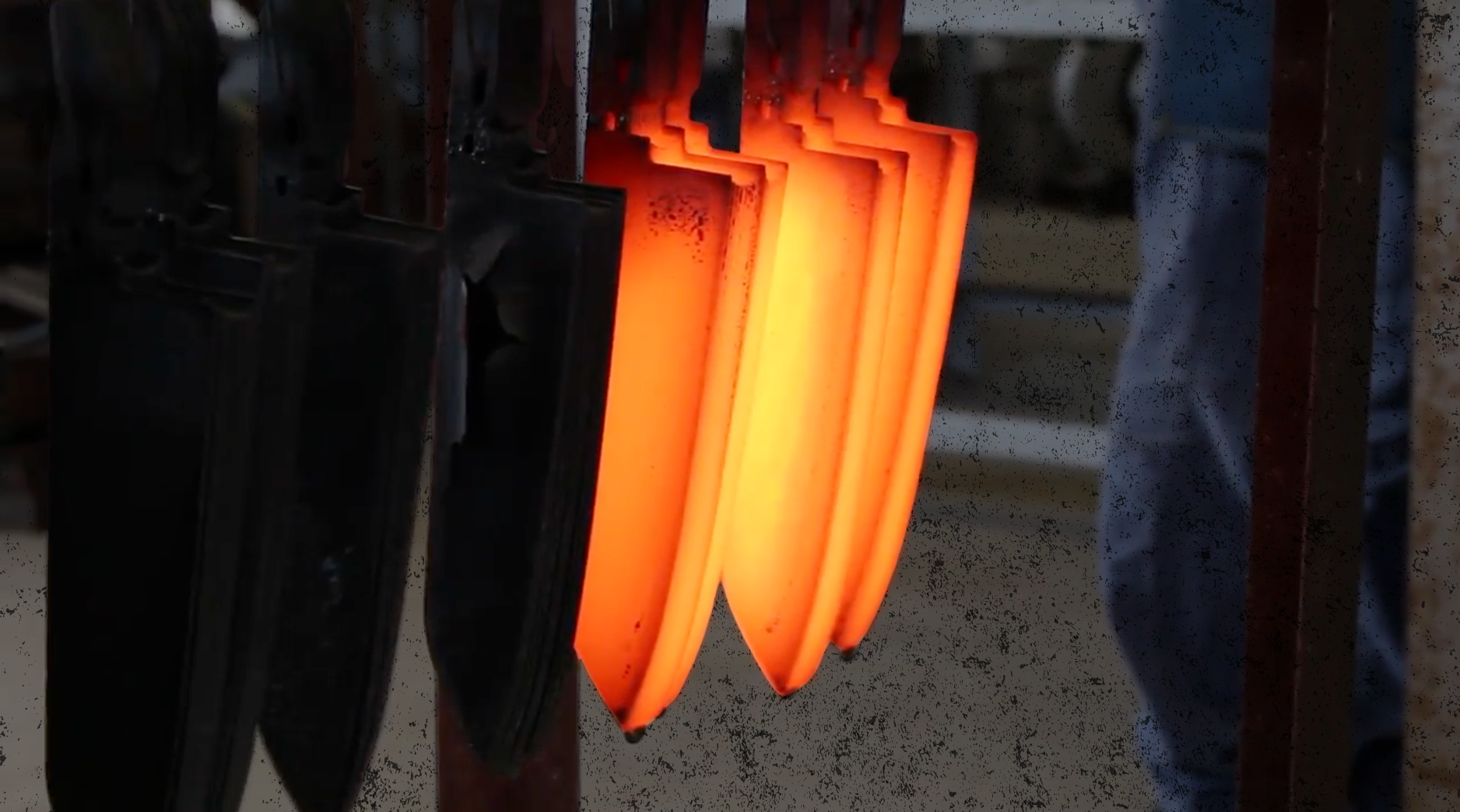
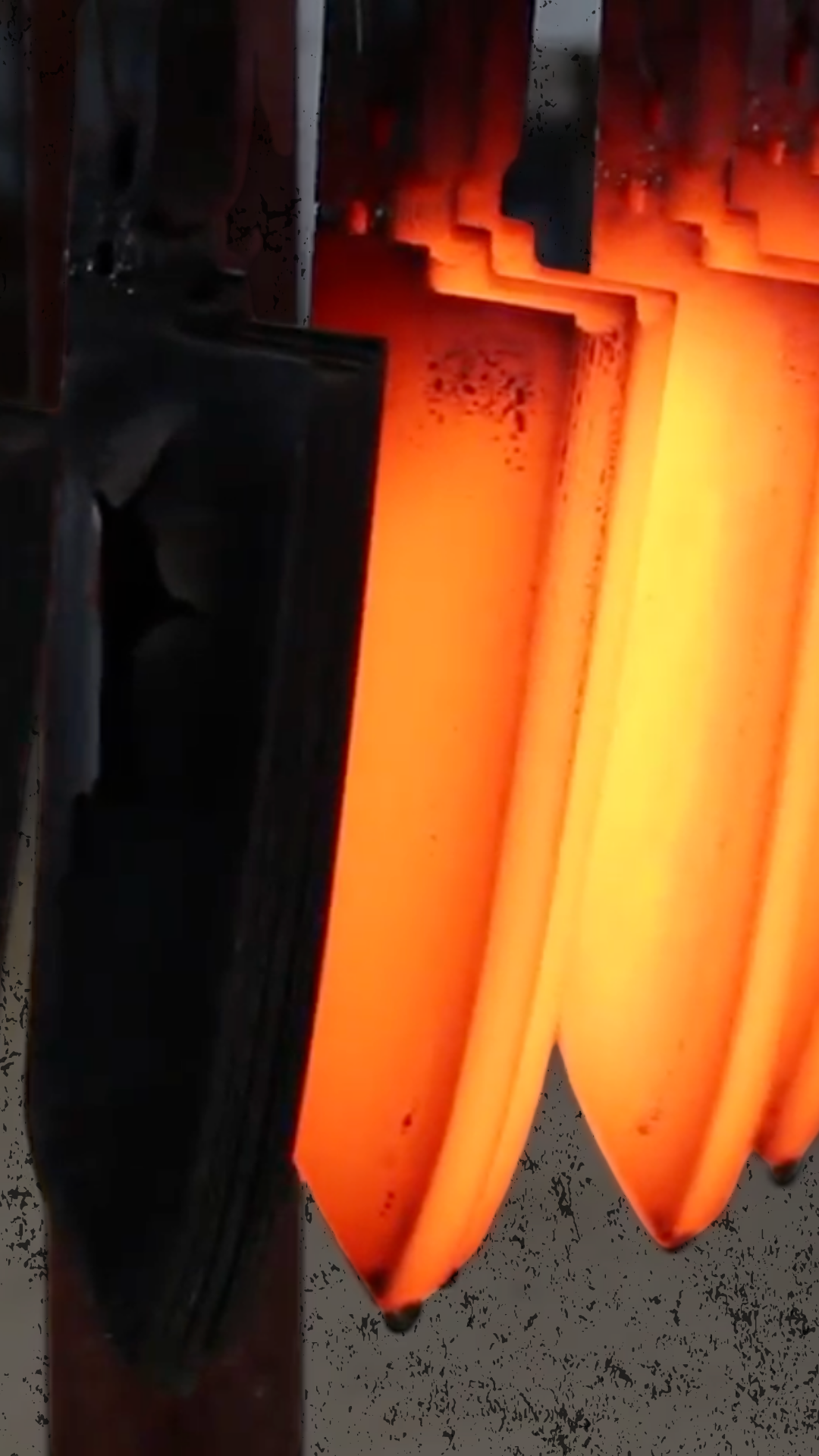
AKA White #1: This steel type is very similar to Shirogami #2 but has added levels of carbon allowing it to achieve a slightly higher rockwell hardness, contributing to better edge retention. This does make the steel a bit more brittle and prone to chipping. It is very easy to sharpen and polish and because of its fine grain structure can achieve a super sharp edge.
Chemical Composition:
C 1.25-1.35%
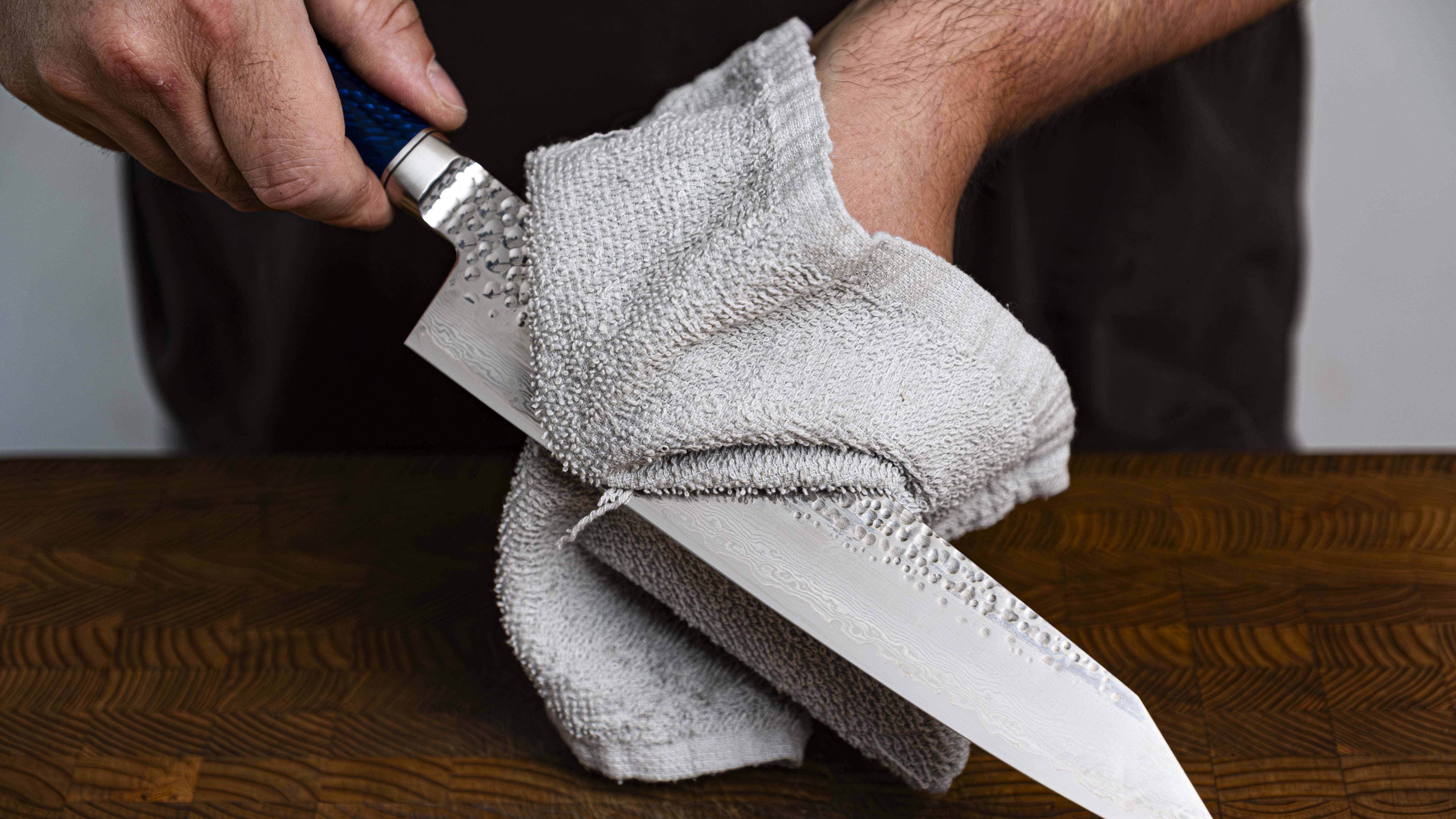
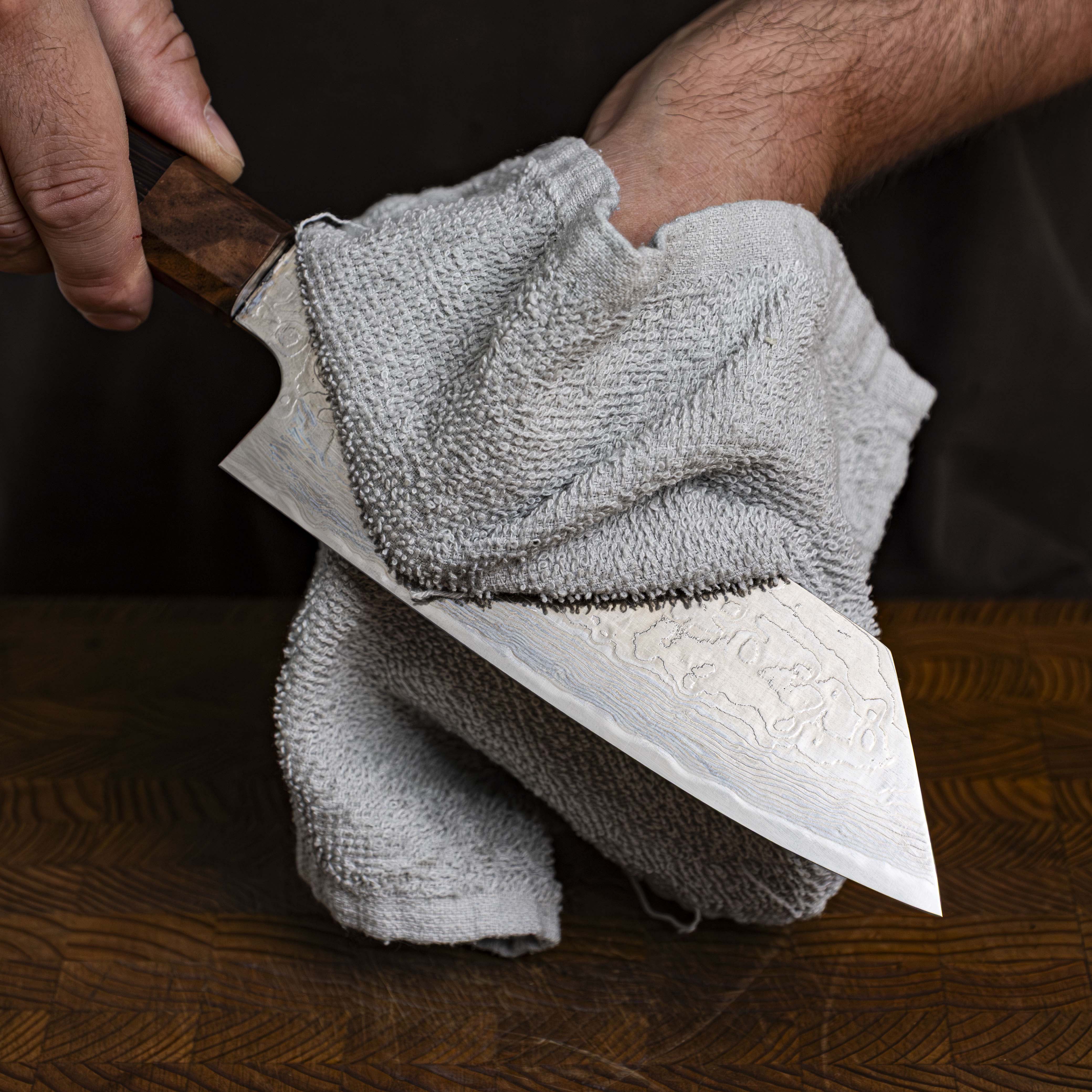
MODERATE MAINTENANCE
Stainless clad knives have two softer outer layers of stainless steel around a harder core layer of carbon steel. The clad line (wavy line near the cutting edge of the knife) is where the layers of stainless steel end. Past this point, the exposed carbon steel is susceptible to rust or discoloration. This edge will develop a patina (a darkening of the steel; blue, dark grey, sometimes black colouration of the blade) no matter how well they are cared for. Stainless clad knives are great for those who want the easy sharpening of a carbon steel coupled with the rust resistant properties of stainless steel.

Kenshiro Hatono is a young and very talented smith who opened his own business producing knives in the spring of 2024. He previously worked as an apprentice for 6 years under Katsuyasu Kamo of the Takefu Knife Village in Echizen City, Fukui Prefecture, Japan. He is able to work with a variety of steels producing many different finishes with excellent edge geometry. Though early in his career, he is already highly respected and expected to do great things.
